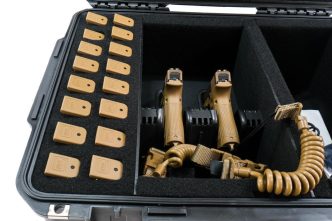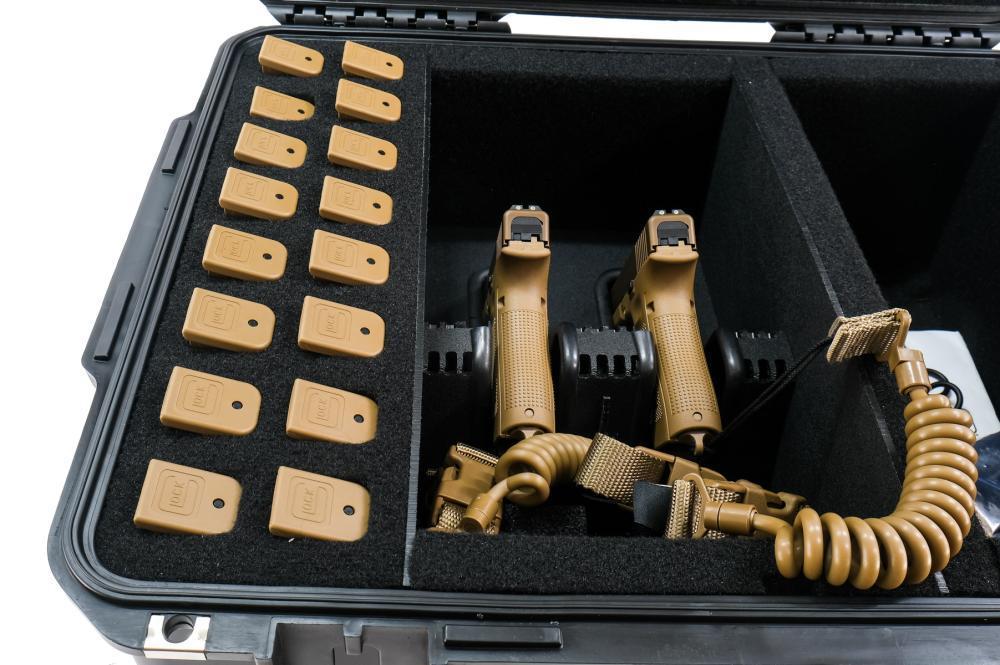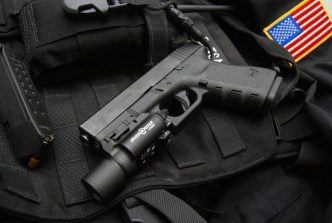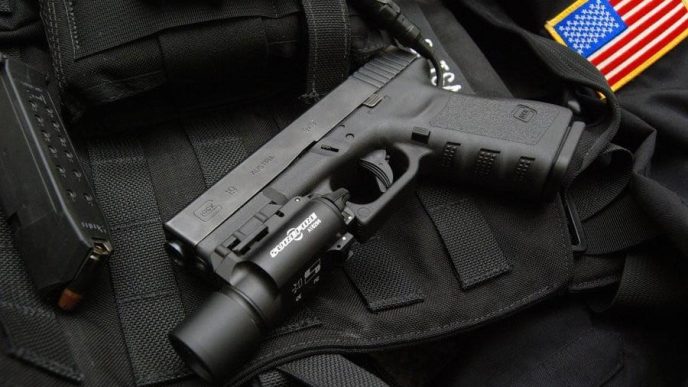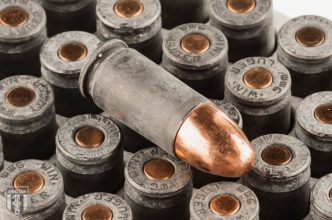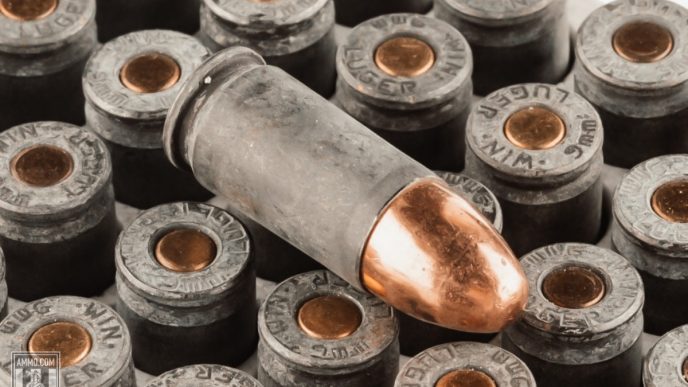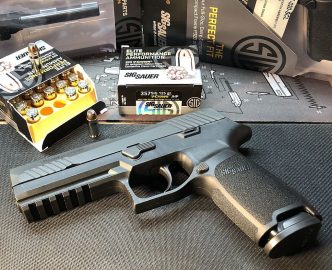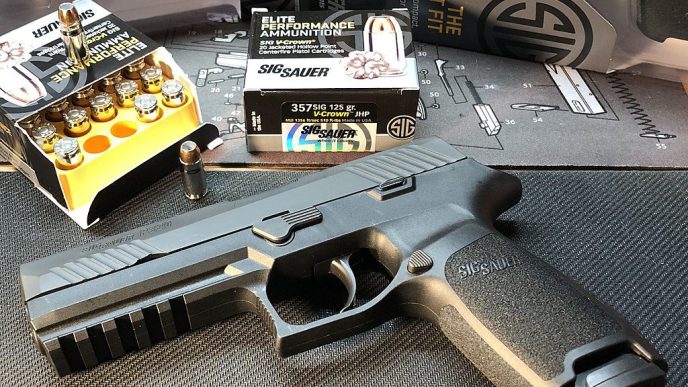Glock is one of the world’s most popular and widely-used handgun brands. Since its inception in 1982, Glock has consistently evolved its design, improving its original concept with each new generation. In this article, we will take a closer look at the different generations of Glock pistols and how they differ.
Introduction to Glock Pistols
Glock is an Austrian company producing firearms since the early 1980s. The company was founded by Gaston Glock and is headquartered in Deutsch-Wagram, Austria. Glock is widely recognized for its polymer-framed, semi-automatic pistols designed for military, law enforcement, and civilian use. The Glock pistol is one of the most popular and widely used firearms in the world today.
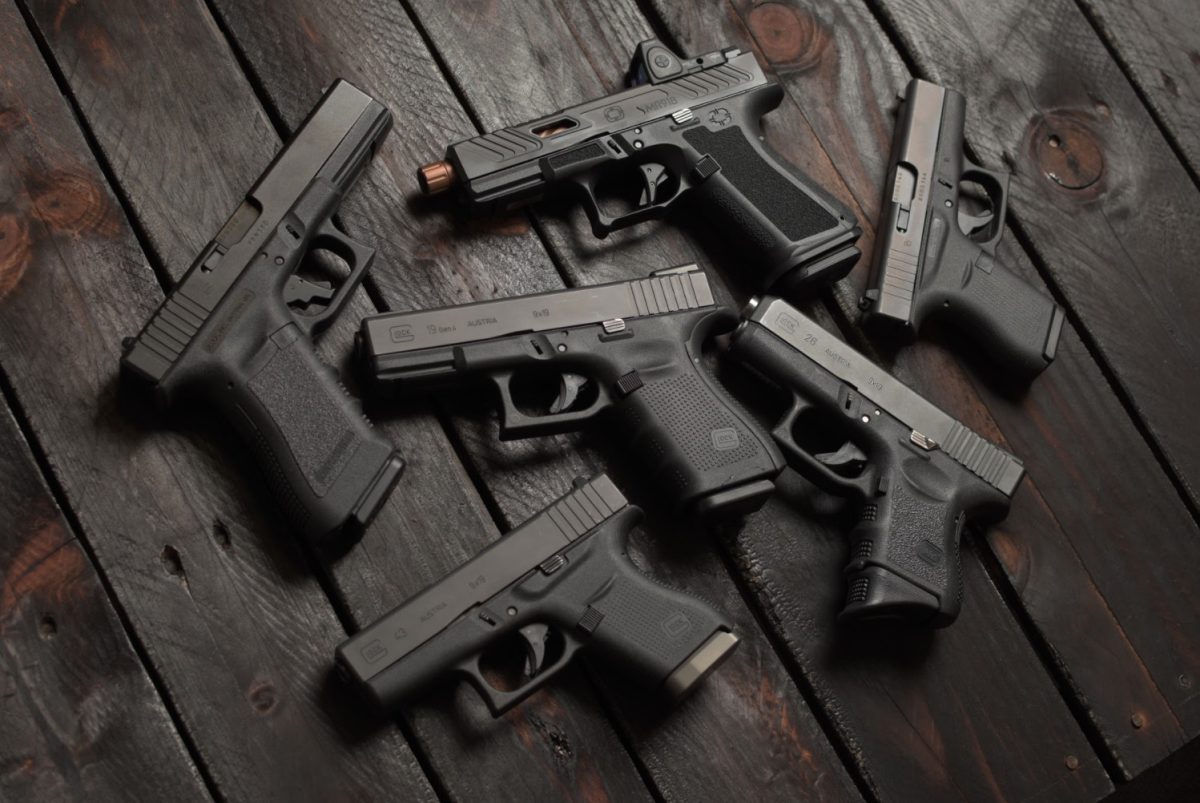
Glock is known for its simplicity, reliability, and durability. The Glock pistol has a unique design that includes a polymer frame, a steel slide, and a locked-breech barrel. This design makes the Glock pistol lighter than comparable firearms and provides a more stable shooting platform. The Glock pistol is also known for its “Safe Action” trigger system, a passive safety system that provides an additional level of safety for the user. The Safe Action trigger system prevents accidental discharges and makes the Glock pistol safer.
First generation
The first generation of Glock pistols included the Glock 17, Glock 19, Glock 20, and Glock 21. These pistols were introduced in the early 1980s and were designed for military and law enforcement use. The first-generation Glock pistols were made with a high-impact plastic frame and steel slide. They were also equipped with the “Safe Action” trigger system.
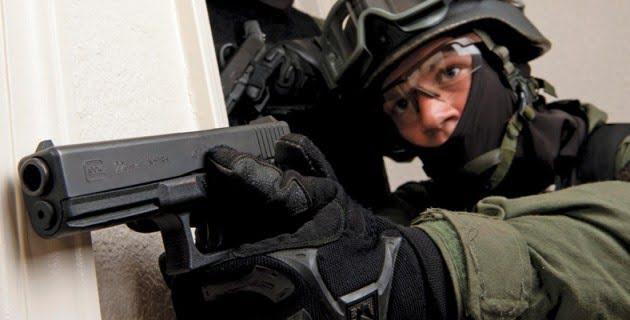
One of the advantages of the first-generation Glock pistols was their lightweight design. The high-impact plastic frame made them lighter than other comparable firearms, which made them easier to carry and handle. The “Safe Action” trigger system also made them safer to handle, as it prevented accidental discharges.
However, the first-generation Glock pistols had some disadvantages as well. One of the main disadvantages was the lack of customization options. The first-generation Glock pistols only had a few accessories available, which limited their versatility. Another disadvantage was the lack of a built-in accessory rail, which made it challenging to mount accessories such as lights and lasers.
Second generation
The second generation of Glock pistols included the Glock 17, Glock 19, Glock 20, and Glock 21. These pistols were introduced in the late 1980s and had several upgrades from the first generation. The second-generation Glock pistols were equipped with a thumb release, which made it easier to disassemble the firearm. They also had a dual recoil spring assembly, which improved the pistol’s reliability.
One of the main advantages of the second-generation Glock pistols was the increased customization options. The second-generation Glock pistols had a built-in accessory rail, which made it easier to mount accessories such as lights and lasers. The dual recoil spring assembly also improved the pistol’s reliability, making it a more dependable firearm.
However, the second-generation Glock pistols still had some disadvantages. One of the main disadvantages was the lack of a grip texture, which made it difficult to maintain a firm grip on the firearm. Another disadvantage was the lack of a finger rest, which made it difficult for users with smaller hands to control the pistol.
Third generation
The third generation of Glock pistols included the Glock 17, Glock 19, Glock 20, Glock 21, Glock 22, Glock 23, Glock 31, Glock 32, and Glock 36. These pistols were introduced in the late 1990s and had several upgrades from the second generation. The third-generation Glock pistols were equipped with a more textured grip, which made it easier to maintain a firm grip on the firearm. They also had a finger rest, which made it easier for users with smaller hands to control the pistol.
One of the main advantages of the third-generation Glock pistols was the increased customization options. The third-generation Glock pistols had a built-in accessory rail, making it easier to mount accessories such as lights and lasers. The textured grip and finger rest also improved the comfort and control of the pistol, making it easier for users to handle.

Another advantage of the third-generation Glock pistols was the improved accuracy. The third-generation Glock pistols had a more accurate barrel, which improved the firearm’s accuracy. The textured grip and finger rest also improved the control of the pistol, making it easier for users to maintain a steady aim.
However, the third-generation Glock pistols still had some disadvantages. One of the main disadvantages was the heavier weight. The third-generation Glock pistols were slightly heavier than the second-generation, which made them more difficult to carry and handle. The heavier weight also made them more difficult to control, especially for users with smaller hands.
Fourth generation
The fourth generation of Glock pistols included the Glock 17, Glock 19, Glock 20, Glock 21, Glock 22, Glock 23, Glock 31, Glock 32, Glock 36, Glock 34, Glock 35, Glock 41, Glock 42, and Glock 43. These pistols were introduced in the late 2000s and had several upgrades from the third generation. The fourth-generation Glock pistols were equipped with an updated frame, which improved the comfort and control of the pistol. They also had an improved trigger system, which provided a smoother trigger pull and improved accuracy.
One of the main advantages of the fourth-generation Glock pistols was the improved comfort and control. The updated frame and trigger system made the pistol easier to handle, improving the overall shooting experience. The fourth-generation Glock pistols also had an improved accessory rail, making it easier to mount accessories such as lights and lasers.
Another advantage of the fourth-generation Glock pistols was the improved reliability. The fourth-generation Glock pistols had an improved recoil system, which made the pistol more dependable and improved the firearm’s accuracy. The improved trigger system also made the pistol more accurate, providing a smoother trigger pull and improved trigger control.
However, the fourth-generation Glock pistols still had some disadvantages. One of the main disadvantages was the increased cost. The fourth-generation Glock pistols were more expensive than the previous generations, which made them less accessible to some users. The heavier weight of the fourth-generation Glock pistols was also a disadvantage, making the pistol more difficult to carry and handle.
Fifth generation
The fifth generation of Glock pistols included the Glock 17, Glock 19, Glock 45, Glock 48, Glock 43X, Glock 43, and Glock 43M. These pistols were introduced in the early 2010s and had several upgrades from the fourth generation. The fifth-generation Glock pistols were equipped with a more ergonomic grip, which improved the comfort and control of the pistol. They also had an improved accessory rail, which made it easier to mount accessories such as lights and lasers.
One of the main advantages of the fifth-generation Glock pistols was the improved comfort and control. The ergonomic grip made the pistol more comfortable to hold and handle, improving the shooting experience. The improved accessory rail also made it easier to mount accessories such as lights and lasers, making the pistol more versatile.
Another advantage of the fifth-generation Glock pistols was the improved reliability. The fifth-generation Glock pistols had an improved recoil system, which made the pistol more dependable and improved the firearm’s accuracy. The improved trigger system also made the pistol more accurate, providing a smoother trigger pull and improved trigger control.
However, the fifth-generation Glock pistols still had some disadvantages. One of the main disadvantages was the increased cost. The fifth-generation Glock pistols were more expensive than the previous generations, making them less accessible to some users. The heavier weight of the fifth-generation Glock pistols was also a disadvantage, making it more difficult for some users to carry and handle.
Another disadvantage of the fifth-generation Glock pistols was the lack of customization options. While the fifth-generation Glock pistols had improved ergonomics and an improved accessory rail, they lacked the customization options that some users desired. Some users prefer more customization options, such as different grips and sights, to personalize their firearms and improve their shooting experience.
All Glock models ever produced
9×19 Parabellum
Glock 17
The Glock 17 is a highly-regarded 9mm pistol that was first introduced in 1982. With a standard magazine capacity of 17 rounds, the Glock 17 has set the standard for reliability and durability in the world of firearms. Over the years, several modified versions of the Glock 17 have been introduced, each with its unique features.
Glock 17L
The Glock 17L, introduced in 1988, is a variant that boasts a longer slide and extended barrel. Initially, this model featured three holes in the top of the barrel and a corresponding slot in the slide, but later, production models did not have these holes. Despite its impressive design, the Glock 17L is manufactured in limited quantities, making it a rare and highly sought-after firearm.
Glock 17C
The Glock 17C, introduced in 1996, is designed to compensate for recoil through slots cut into the barrel and slide. This model is highly popular, and many other Glock pistols now come with this option, each with a “C” suffix on the slide.
Glock 17MB
The Glock 17MB version features an ambidextrous magazine catch, making it an excellent choice for left-handed shooters. However, with the introduction of the fourth-generation models, which have a reversible magazine catch, the 17MB and other MB variants are no longer available.
Glock 17M
The Glock 17M is a 9mm full-size pistol introduced in 2016. The 17M was designed in response to a request from the Federal Bureau of Investigation (FBI) for a new firearm. The pistol features several changes from its Generation 4 model, including removing finger grooves, adding an ambidextrous slide lock, a rounded slide nose profile, a flared magazine well with new baseplates, and a tougher finish on metal components. Additionally, the 17M uses conventional rifling instead of the polygonal rifling found in previous Glock models. By 2017, the Glock 17M had been adopted as the standard pistol by the FBI, South Carolina Highway Patrol, and Ontario Provincial Police.
Glock P80
The Glock P80 was introduced in 2020 and was commissioned by United States firearms distributor Lipsey’s. The P80 is a commemorative model that pays homage to the original Glock 17 Gen 1 pistol, with a 9mm chamber and features such as a Gen 1 frame with stippling and Gen 2/Gen 3 internals.
Glock 18
The Glock 18 is a selective-fire variant of the Glock 17 that was first produced in 1986. The Glock 18 was developed at the request of the Austrian counter-terrorist unit EKO Cobra and was designed to test Glock components under high-stress conditions. The pistol has a lever-type fire-control selector switch on the rear left side of the slide that allows for fully automatic or semi-automatic fire. The Glock 18 typically uses a 33-round extended magazine but can also use other Glock 17 magazines with capacities of 10, 17, 19, or 24 rounds. The Glock 18 is only available to military, law enforcement, and government organizations. Some early Glock 18 models were equipped with a ported barrel to reduce muzzle rise during automatic fire. Another variant, the Glock 18C, features a keyhole opening and compensator cuts in the barrel to improve control during rapid firing.
Glock 18C
The Glock 18C has four progressively larger compensator cuts in the barrel and a dished-out slide between the ejection port and the rear sight. The pistol has a rate of fire of around 1,100 to 1,200 rounds per minute in fully automatic mode. Most of the Glock 18’s characteristics are similar to the Glock 17, but the slide, frame, and fire-control parts are not interchangeable with other Glock models.
Glock 19
The Glock 19 is a compact version of the Glock 17 and was first produced in 1988 for military and law enforcement use. The Glock 19 has a shorter barrel and grip than the Glock 17 and uses a 15-round magazine. The pistol is compatible with magazines from the Glock 17 and 18, giving it capacities of 17 rounds (with +2 extension), 10, 17, 19, 24, 26 (with +2 extension), 31 (with +2 removed), and 33 rounds. The Glock 19’s slide mass is unchanged from the Glock 17 to preserve the short recoil system’s reliability, but all other components are interchangeable with the Glock 17. Special Operations Forces have also used the Glock 19 Gen 4 MOS as the MK27 MOD 2.
Glock 19X
The Glock 19X is a civilian version of the Glock entry into the XM17 Modular Handgun System competition for the US military. It features a Glock 19 slide and a Glock 17 frame in coyote color and includes a lanyard loop and front lip on the magazine well for easier magazine changes with gloves on. The 19X comes standard with night sights and includes 17 and 19-round magazines in coyote color. It has been one of Glock’s best-selling pistols with over 100,000 sold in the first 6 months of release.
Glock 19M
The Glock 19M is a compact 9mm pistol created in response to an FBI solicitation. It has removed finger grooves, an ambidextrous slide lock, a rounded slide nose profile, flared magazine well, and a tougher finish on metal components. The 19M also has conventional rifling instead of polygonal rifling. The US Marine Corps uses the 19M, designated as the M007, for CID and Marine One personnel.
Glock 19 Canadian
The standard Glock 19 is too short for legal use in Canada, where the limit for Restricted Class firearms is a 105mm barrel. A market-specific Glock 19 with a 106mm barrel and a hollow maple leaf laser engraved on the slide has been sold in Canada since 2017.
Glock 26
The Glock 26 is a 9mm subcompact pistol designed for concealed carry and was introduced in 1995. It has a smaller frame than the Glock 19, a two-finger pistol grip, a shorter barrel and slide, and a double-stack magazine with a standard capacity of 10 rounds. The Glock 26 has been extensively reworked from the Glock 19 and features a dual recoil spring. Factory magazines from the Glock 17, Glock 18, and Glock 19 with capacities of 10 to 33 rounds can be used in the Glock 26.
Glock 26 for U.S. CBP
This is a Generation 5 Glock 26 for the U.S. Customs and Border Protection (CBP) that has a flared magazine well with a more extended grip and a flat magazine well without a bump. It also includes a longer 11-round magazine.
Glock 34
A competition-oriented pistol, the Glock 34 is based on the design of the Glock 17 and features a slightly shorter slide and barrel to meet size requirements for various shooting events. Released in 1998, the Glock 34 boasts a 21mm longer barrel and slide compared to the Glock 17, an extended magazine release, a 20 N trigger pull, and an adjustable rear sight. Additionally, the front slide features slanted sides instead of squared edges, while the top has been milled out to reduce weight.
Glock 43
The Glock 43 is a slim and compact pistol featuring an ultracompact slide and frame. As the first Glock pistol with a single-stack 9mm magazine, it has a standard capacity of 6 rounds and is unique to this model. It is not compatible with magazines from larger Glock models due to its single-stack design, and the backplate grip cannot be removed.
Glock 43X
Similar to the Glock 43, the 43X has a longer and thicker grip for an increased magazine capacity of 10 rounds. Its grip is comparable to the Glock 48 and can be interchanged. The 43X also features front slide serrations, a built-in extended beaver tail, a reversible magazine catch, GMB rifling, and a two-tone finish. In the E.U., it comes with a rail.
Glock 45
A black-colored version of the Glock 19X, the Glock 45 is designed for police use and incorporates Gen 5 features. It has a Glock 17 grip, a Glock 19 slide with front slide serrations, and a flared magazine like the Gen 5 Glocks. It is compatible with Gen 5 17-round magazines and does not have the front lip on the magazine well that blocks the Gen 5 17-round magazine’s floor plate from locking. The Glock 45 has plastic sights instead of night sights and does not have the lanyard loop found on the 19X.
Glock 46
A compact version of the Glock 19, the Glock 46 featured a rotating barrel breech lock system and was designed for use by law enforcement agencies in Germany. It can be disassembled without pressing the trigger and has enhanced drop safety to comply with German technical guidelines for service pistols. The state of Saxony-Anhalt is the first to use the Glock 46 TR as a standard-issue sidearm, with plans to provide over 6,400 officers with up to 8,600 new pistols by 2021.
Glock 47
A full-sized MOS version created for U.S. Customs and Border Protection, the Glock 47 is fully compatible with the Glock 19. The G47 slide can be used on a G19 frame to create a longer pistol, and a G19 slide can be used on a G47 frame to create a pistol similar to the Glock 45. The G47 and G19 Gen5/MOS/MOD1/FS have modularity between both pistols, meaning the complete upper can be mounted on the other’s frame.
Glock 48
Similar to the subcompact Glock 43 and 43X, the Glock 48 is a slimline version with a longer barrel and slide than the 43X. The slides for the Glock 43, 43X, and 48 are functional on any of these three frames. The G48 features a 4.17-inch barrel, front slide serrations, a built-in extended beaver tail, a reversible magazine catch, GMB rifling, a two-tone finish, and a 10-round magazine capacity.
9×21 mm
The 9x21mm pistol cartridge was developed and produced by Israel Military Industries (IMI) to be used in markets where military-style cartridges such as the 9x19mm Parabellum are not permitted for civilian use. Glock produces a range of models, including the Model 17, that is chambered in 9x21mm for these markets. However, Glock does not manufacture or export 9x21mm pistols for the United States market, making any 9x21mm Glock model a rare and sought-after item among collectors and gun enthusiasts in the US. Only a limited number of 9x21mm Glock models have been imported into the US, and collectors and gun enthusiasts primarily own them.
10 mm Auto
Glock 20
The Glock 20, a pistol designed for the law enforcement and security sector, was introduced in 1991. It was developed specifically for the 10mm Auto cartridge and can handle both full-power and reduced “FBI” loads. Compared to the Glock 17, the Glock 20 is slightly larger, measuring 2.5 mm wider and 7 mm longer. Although the two models share a close to 50% parts commonality, the major components of the Glock 20 are scaled up and cannot be interchanged with those of the Glock 17. With a standard magazine capacity of 15 rounds, Glock introduced a 152 mm barrel option as a drop-in option in 2009.
Glock 20SF
The Glock 20SF, a variation of the Glock 20, uses the Short Frame (SF) design. This design is based on the standard Glock 20 frame but reduces the trigger reach from the grip by 2.5 mm and shortens the heel of the pistol by 4 mm, making it easier to operate for users with smaller hands.
Glock 29
The Glock 29, introduced in 1997, is a 10mm Auto equivalent of the subcompact Glock 26. With a 96 mm barrel and a standard magazine capacity of 10 rounds, this pistol offers the versatility of functioning with factory magazines from its full-size counterpart, offering an optional capacity of 15 rounds.
Glock 29SF
Similarly, the Glock 29SF, a variation of the Glock 29, uses the SF design. This design reduces the trigger reach from the grip by 2.5 mm and is based on the standard Glock 29 frame.
Glock 40
The Glock 40, introduced in 2015, is a 10mm Auto equivalent of the long-slide Glock 17L. This model is only available in the Gen4 frame and MOS (Modular Optic System) configuration.
.45 ACP
The Glock line of pistols features a unique form of polygonal rifling in the barrels of their .45 ACP and .45 GAP models. Unlike the hexagonal-shaped bores used in many other models, these Glock models feature octagonal rifling, which provides a more effective gas seal in large-diameter barrels.
Glock 21
The Glock 21 is a .45 ACP pistol designed for the American market, with a lighter slide to accommodate the lower energy of the .45 ACP cartridge. It has a single-position-feed, staggered-column magazine with a capacity of 13 rounds.
Glock 21SF
For users with smaller hands, the Glock 21SF features a Short Frame lower that reduces the trigger reach by 2.5mm and the heel of the pistol by 4mm.
Glock 30
The Glock 30 is a .45 ACP version of the subcompact Glock 29 and has a standard magazine capacity of 10 rounds, although the 13-round magazine from the Glock 21 is also compatible. The Glock 30SF is a variation of the Glock 30 that also uses a Short Frame lower.
Glock 30S
The Glock 30S is a version of the Glock 30 that features a thin slide and a double-stack magazine with a capacity of 10 rounds.
Glock 36
The Glock 36 is a slimline version of the Glock 30 chambered for .45 ACP with an ultracompact slide and frame. It has a unique single-stack magazine with a capacity of 6 rounds but cannot use magazines from larger models.
Glock 41
The Glock 41 is a competition-oriented version of the Glock 21 with a 5.3-inch barrel and elongated slide. It is only available in the Gen4 frame.
.40 S&W
The Austrian firearms manufacturer Glock developed the Glock 22, 23, 24, 27, and 35 series of semi-automatic pistols. Each model is designed to handle the .40 S&W cartridge, a popular choice among law enforcement agencies and civilian shooters.
Glock 22
The Glock 22, introduced in 1990, is a full-sized pistol with a modified slide, frame, and barrel to accommodate the .40 S&W cartridge. With a standard magazine capacity of 15 rounds, it has gained widespread popularity among law enforcement agencies worldwide, including the Baltimore Police Department, Los Angeles Police Department, Miami Police Department, and several others in the United States, Australia, and Canada.
Glock 23
The Glock 23, a compact version of the Glock 19, is dimensionally identical to its predecessor but is slightly heavier and comes with a standard magazine capacity of 13 rounds. The factory 15-round magazine from the Glock 22 can also be used in the Glock 23.
Glock 24
The Glock 24, introduced in 1994, is a long-slide variant of the Glock 22, similar to the Glock 17L. It features a compensated, ported barrel and is now discontinued, replacing the Glock 34 and 35.
Glock 27
The Glock 27 is a subcompact version of the Glock 26 and has a standard magazine capacity of 9 rounds. The factory magazines from the larger Glock 22 and 23 can be used in the Glock 27, increasing the capacity to 13 or 15 rounds. Spacers are also available to improve the ergonomic feel of the pistol when using longer magazines.
Glock 35
The Glock 35 is a .40 S&W version of the competition Glock 34. It was once the service pistol for the Kentucky State Police but was eventually replaced with 9mm weapons due to improved penetration of 9mm bullets.
Finally, it’s worth noting that all standard Glock models chambered in .40 S&W can easily be converted to the corresponding .357 SIG chambering by replacing the barrel only. The .40 S&W magazines will feed the .357 SIG rounds without needing additional parts.
.380 ACP
The Glock 25 and 28 models, chambered in .380 ACP, were designed to cater to markets prohibiting firearms in military calibers such as 9mm Parabellum. Despite this, they are not available for purchase by civilians in the United States due to import restrictions based on the caliber. They are also restricted in Canada for not meeting minimum barrel length requirements for handguns.
The low bolt thrust of the .380 ACP cartridge required the locked-breech design of the Glock 19 and 26 to be slightly modified for the Glock 25 and 28, as they operate through straight blowback of the slide. This modification involved changes to the barrel locking surfaces and a redesign of the former locking block. Unlike most blowback designs, the barrel is not fixed to the frame but instead moves rearward during recoil until it is tilted below the slide, a mechanism similar to the standard locked-breech system. The reduced size and weight of the Glock 42 led to the return of the Glock-standard locked-breech design.
The Glock 25, introduced in 1995, features a blowback mechanism and has a 102mm barrel. Its magazine capacity is 15 rounds, and the standard fixed sight elevation is 6.9mm, compared to the 6.5mm elevation used in the 9mm models. The Glock 28, introduced in 1997, is a blowback derivative of the subcompact Glock 26 and has an 87mm barrel. Its standard magazine capacity is 10 rounds, but the 15-round magazine of the Glock 25 is compatible with the Glock 28. Its standard fixed-sight elevation is also 6.9mm.
The Glock 42, introduced in 2014, is a locked-breech “slimline” design with an 83mm barrel. It has a single-stack magazine with a capacity of six rounds and is Glock’s smallest model to date. It is manufactured in the United States, which allows for its sale in the domestic market, unlike the Glock 25 and 28.
.357 SIG
Glock 31
The Glock 31 is a full-sized pistol with .357 SIG ammunition. It has a standard magazine capacity of 15 rounds.
Glock 32
The Glock 32 is a compact pistol with .357 SIG ammunition. It has a standard magazine capacity of 13 rounds.
Glock 33
The Glock 33 is a subcompact pistol that uses .357 SIG ammunition. It has a standard magazine capacity of 9 rounds.
These Glock models (31, 32, and 33) can be easily converted to use .40 S&W ammunition by replacing the barrel. This conversion can be made without the need to replace any other parts, as the magazines used for .357 SIG ammunition will also work with .40 S&W ammunition.
.45 GAP
Glock 37
The Glock 37 is a .45 GAP model similar to the Glock 17 in design but features a wider, beveled slide, a larger barrel, and a different magazine. The standard magazine capacity is 10 rounds, and it was designed to provide ballistic performance comparable to the .45 ACP in the frame size of the Glock 17.
Glock 38
The Glock 38 is a compact .45 GAP model that is based on the design of the Glock 19. The standard magazine capacity is 8 rounds.
Glock 39
The Glock 39 is a subcompact .45 GAP model that is based on the design of the Glock 26. The standard magazine capacity is 6 rounds.
.22 LR
The Glock 44 is a compact, lightweight pistol chambered in .22 LR. It is based on the design of the popular Glock 19 but is designed to use a blowback mechanism instead of a locked breech mechanism used in other Glock pistols. With a magazine capacity of 10 rounds and a weight of 12 ounces, the Glock 44 is an excellent option for plinking and target shooting. The Glock 44 also features Glock’s signature polygonal rifling, which has been tested to work well with lead .22 bullets, and a steel/polymer composite slide for the lower weight needed for blowback.
Conclusion
In conclusion, the different generations of Glock pistols have evolved, and each generation has its advantages and disadvantages. The first-generation Glock pistols were reliable but lacked some features and customization options that users desired. The second-generation Glock pistols improved upon the reliability and added some customization options. The third-generation Glock pistols improved accuracy and added a built-in accessory rail. The fourth generation Glock pistols improved upon comfort and control and increased reliability. The fifth generation Glock pistols improved upon the ergonomics and increased the reliability, but were more expensive and lacked some customization options. Each generation of Glock pistols has unique features, and it is up to the user to determine which generation is best for their needs.
